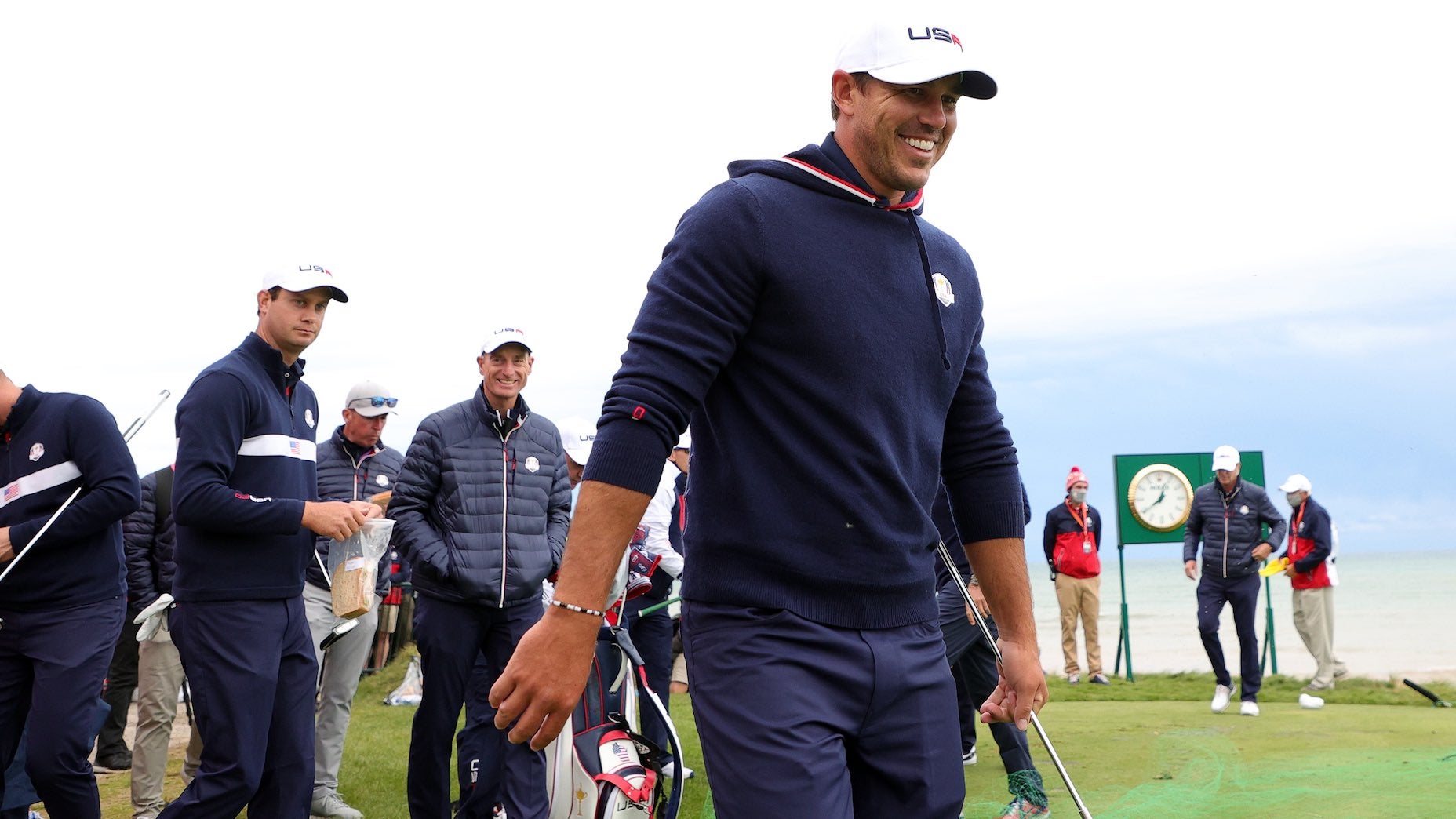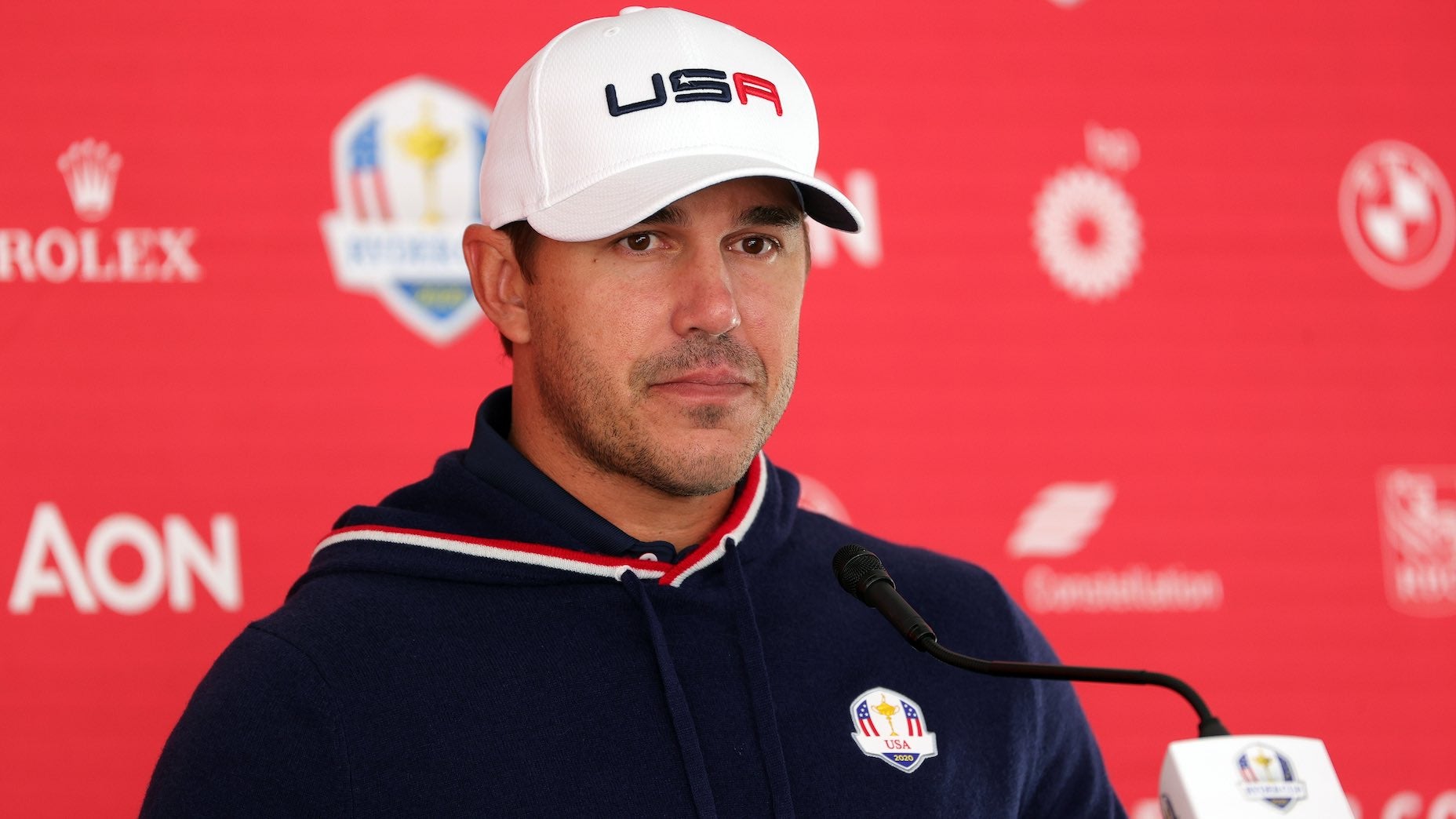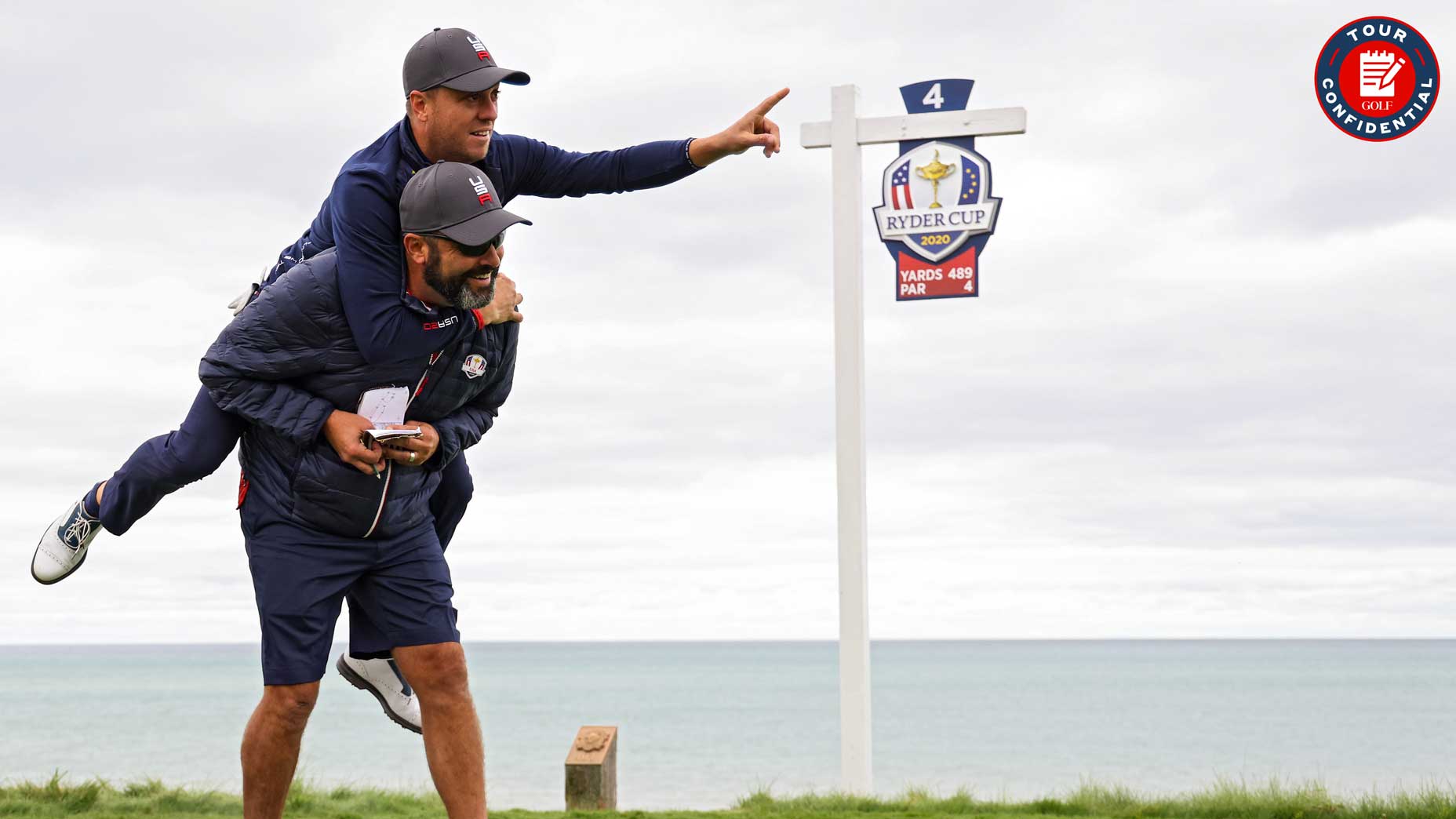HAVEN, Wis. — Life, as T.S. Eliot once said, is very long.
So is Ryder Cup Week.
Eliot was born in St. Louis but moved to England in his 20s. In 1927 he took up British citizenship. That meant he would have had a tough time picking a side in June of that same year, when a team of nine sailed from Great Britain to Massachusetts to face off in the first-ever Ryder Cup matches.
It took the Brits a week to cross the Atlantic by boat. There was another week before matches began. And then they sailed home several days later, having suffered a 9.5-2.5 thumping at the hands of Captain Walter Hagen and the American side.
So when Modernist poet Brooks Koepka told Golf Digest last week that Ryder Cup Week was “different,” “hectic,” and “a bit odd,” he wasn’t grousing. He was merely paying homage to this event’s nine decades of inconvenience.
The travel piece has gotten somewhat more seamless. Last week, the U.S. players gave up one of their precious free weekends to fly to Wisconsin for a mini-camp at Whistling Straits to get to know the course better. Then they flew home. A week later, the team returned. They’d spend four more days getting to know the course. By now, they know the course. The travel is quicker but the practice rounds are endless.
“I might even have a couple of beers tonight to unwind,” one American caddie confided on the range. “Sorta like I did last night. And the night before.” He cocked his head sideways. “And the night before that, I suppose.”
Gossip from the grounds: What insiders are talking about at Whistling StraitsBy: Luke Kerr-Dineen , Dylan Dethier
What happens at these practice rounds? It depends who you are. The players do a lot of jawing and they do a lot of practicing. Bryson DeChambeau sets up his Foresight launch monitor on every shot, compiling gameplay data for on-course application. Patrick Cantlay and Xander Schauffele drop ball after ball in the greenside rough, debating the merits of alternate chipping strategies. Team Europe hands out cheeseheads, hoping to win over a few extra supporters.
The assistant captains mutter to each other. They stand and they fold their arms and they look like they’re studying matters of extremely high consequence. The serious arm-crossing is the price of admission; that’s the requirement to enter the hang that is this week’s team room. Zach Johnson hits a few chip shots from behind the 18th green. It’s unclear if he’s doing research, getting in some practice or staving off boredom.
“He plays if somebody gets Covid,” a spectator mutters knowingly. There are a lot of knowing mutters at the Ryder Cup. They’re not always correct.
For spectators, these practice rounds are a confusing experience. There are only 12 players per team, 24 total, which means there are only six groups on the entire property. There are plenty of people in the crowd but they’re not sure what to cheer for. The players are mixing formats and hitting different golf balls. There’s Sergio Garcia, hitting wedge into the green. There’s Jon Rahm, draining the birdie putt off Garcia’s ball. The Europeans are playing straight alternate shot. Some Americans are playing alternate shot with two balls. The criss-crossing is hard to follow.
There are matches going on, like Ian Poulter and Rory McIlroy taking on Paul Casey and Lee Westwood. There are plenty of practice shots, too. Which shots are fake and which ones are real-but-still-fake? Should crowds applaud made putts? Made second-putts?
‘Y’all spun it that way’: Brooks Koepka unhappy with Ryder Cup blowbackBy: Dylan Dethier
Some resort to the modern fan’s delight of competitive attention-seeking. Can you get a fist bump? A shoutout? An acknowledgement from Phil Mickelson as he walks by and you shout his name while filming?
Others try to name-drop. Jimmy from Your Home Country Club says hi! These only connect about 10 percent of the time. Proceed with caution: when they fall, they fall flat.
Fans call out to the other familiar faces inside the ropes, too, who aren’t practicing and are therefore much more likely to call back. Riggs from Barstool, snapping social videos. Colt Knost, SiriusXM microphone in hand. Jimmy Roberts, chatting up players, plotting out storylines for NBC.
Some of the most satisfied customers are those who don’t measure success by total golf shots witnessed but instead through the joy of a tall boy and a sunny seat on the grass. The Michelob Ultras come in 24 oz. cans here. The brewers of Spotted Cow, the local lager of choice, must have upped their production capacity. As one European foursome trods up the path to the 10th green, a woman tugs on her husband’s oversized shirt sleeve. “We need Bloody Marys!”
For some groups, practice rounds are hangouts disguised as work. You might model your own buddies trips after the Ryder Cup, but it turns out theirs are increasingly modeled after yours. Playful matches. Plenty of golf. Plenty of hanging out. Cleaning up for dinner.
Jordan Spieth and Justin Thomas are taking on Xander Schauffele and Patrick Cantlay in a fourball matchup. At the short par-3 12th, Spieth yanks his tee shot some 30 yards left. Captain Stricker, arriving from the adjacent American group, shakes his head.
Tour Confidential: Ryder Cup pairings surprises and best matchupsBy: GOLF Editors
“What’re you doing up there?”
Spieth, hand caught in the cookie jar, shrugs his shoulders.
“Messin’ around!”
He hacks out a recovery shot, chips past the hole and scoops up his short bogey putt.
“All yours, Justin,” he tells his partner.
Thomas’ birdie try looks like it’s going to fall but sits on the edge. Schauffele snags it on his way past the hole and tosses it back to Thomas, who starts gesturing in mock outrage.
“That putt counts!” he yells. “It wasn’t 10 seconds. I learned that at the Solheim Cup!”
Koepka caught hell for saying so, but he was right. Life is good here, but it’s exhausting, too. You’re on and you’re on and you’re on. The constant banter. The omnipresent media. The getting to know your partner. The dressing up for dinners. The captains and assistant captains and hand-shaking with VIPs. You’d do well not to fade by the time the week actually starts. These guys spend most weeks on autopilot. This week, that’s impossible. Adrenaline is powerful, but does it last five rounds?
That’s the fun of it, too.
“There’s a lot of team dinners, going out in groups, a lot of things that we’re not as accustomed to on a normal week,” Tony Finau said. “But when you’re only dealing it for one week and it’s the Ryder Cup, we’re all up for it. We’re all up for the challenge and it ends up being a great time.”
The matches begin Friday morning, at last. The players are ready. The fans are, too. Things get simpler when the golf begins.
T.S. Eliot said something else, too, about the end of humanity, which applies here.
“And the wind shall say: ‘Here were decent Godless people: Their only monument the asphalt road. And a thousand lost golf balls.'”
There’s an awfully long lead-up to the Ryder Cup’s beginning. There’s a long time after its conclusion, too, during which time none of the world’s best players will visit Haven, Wisconsin, to play the Straits Course. In between the before and the after there are three days of action. The golfers will battle between the asphalt roads, and they’ll leave behind a couple dozen lost golf balls, and the wind will see them out.
Ryder Cup Week is long. And we’ll miss it when it’s gone.




